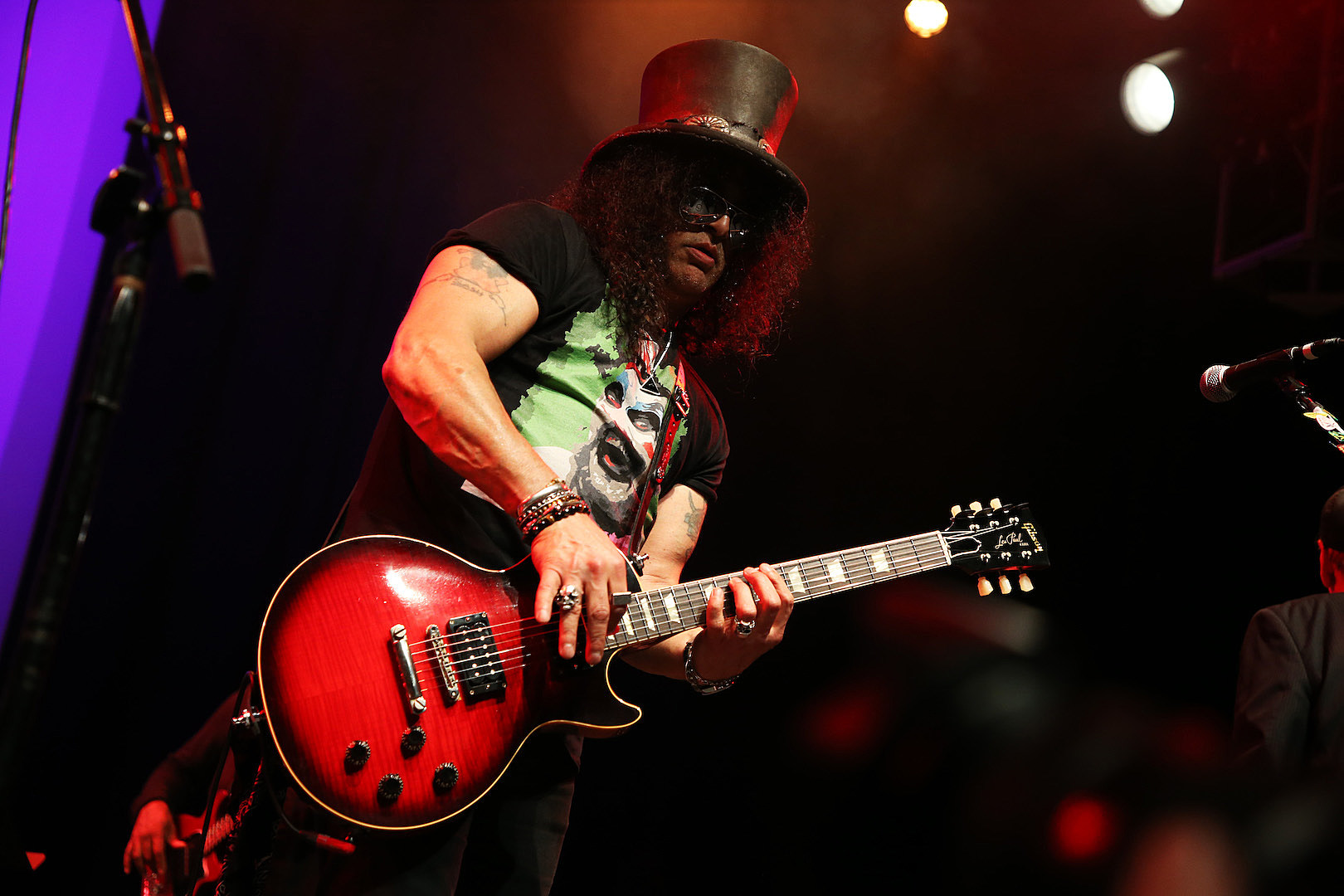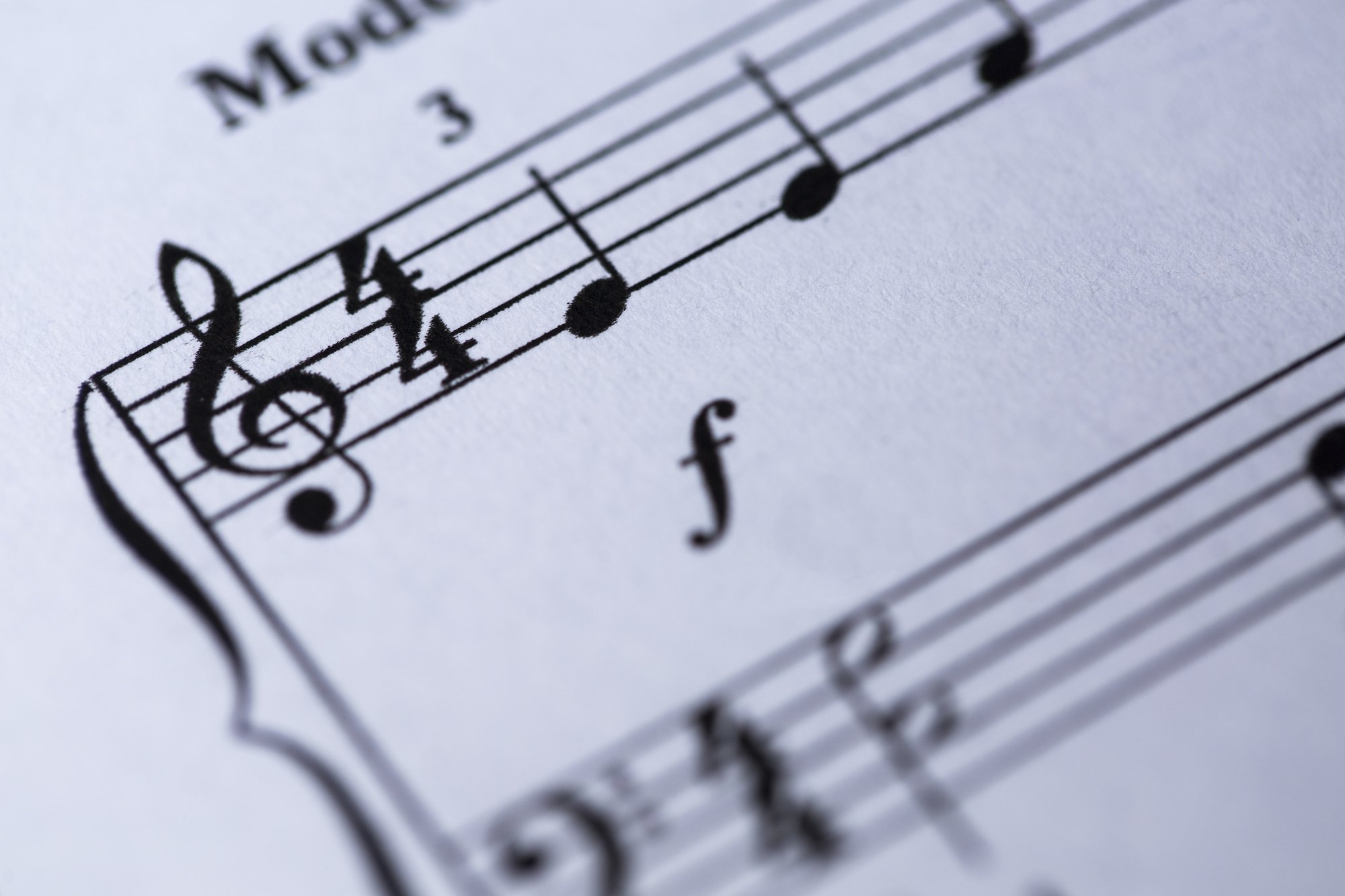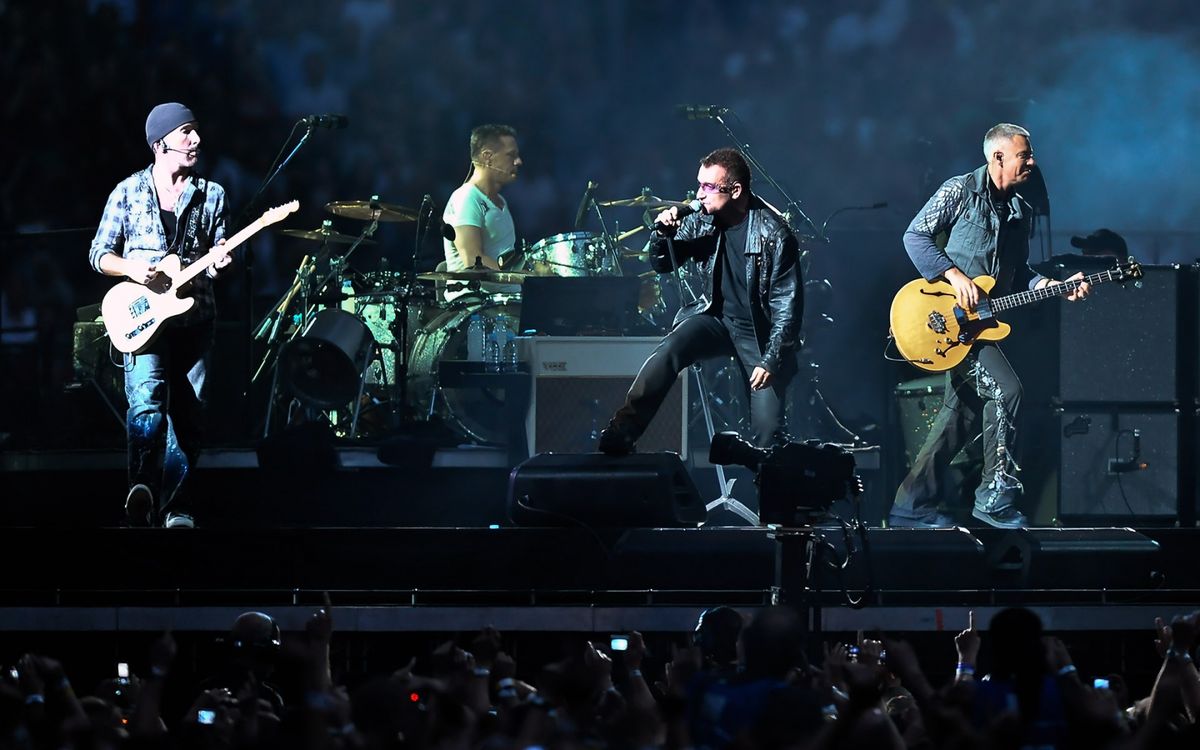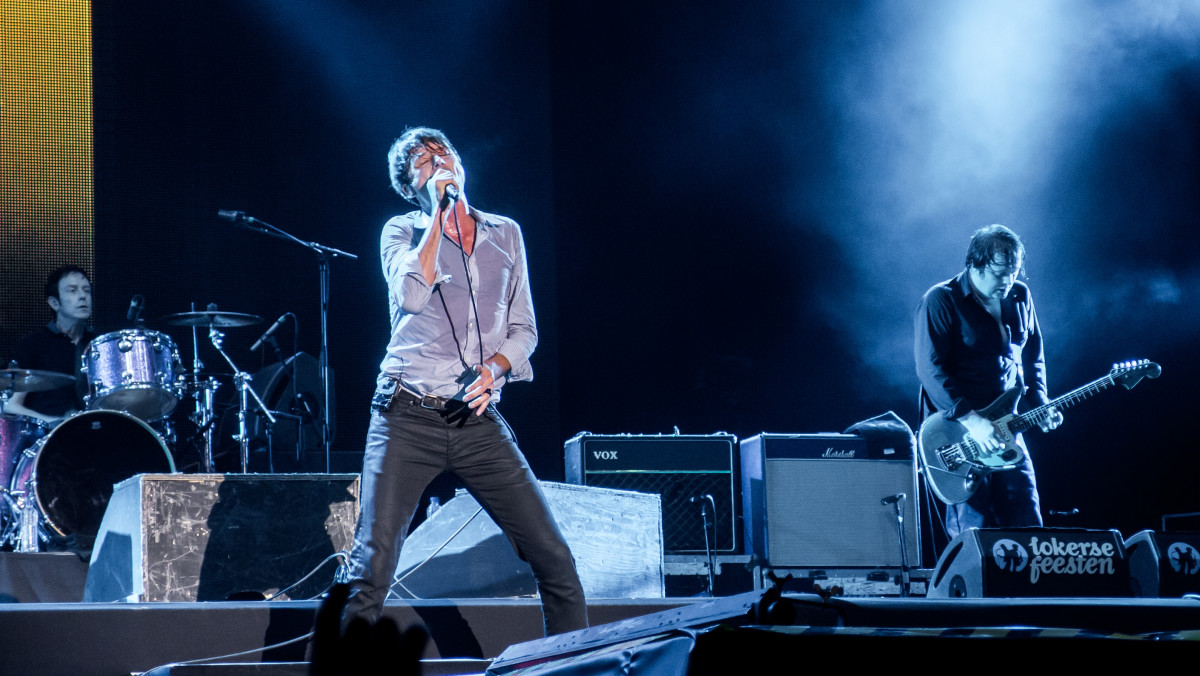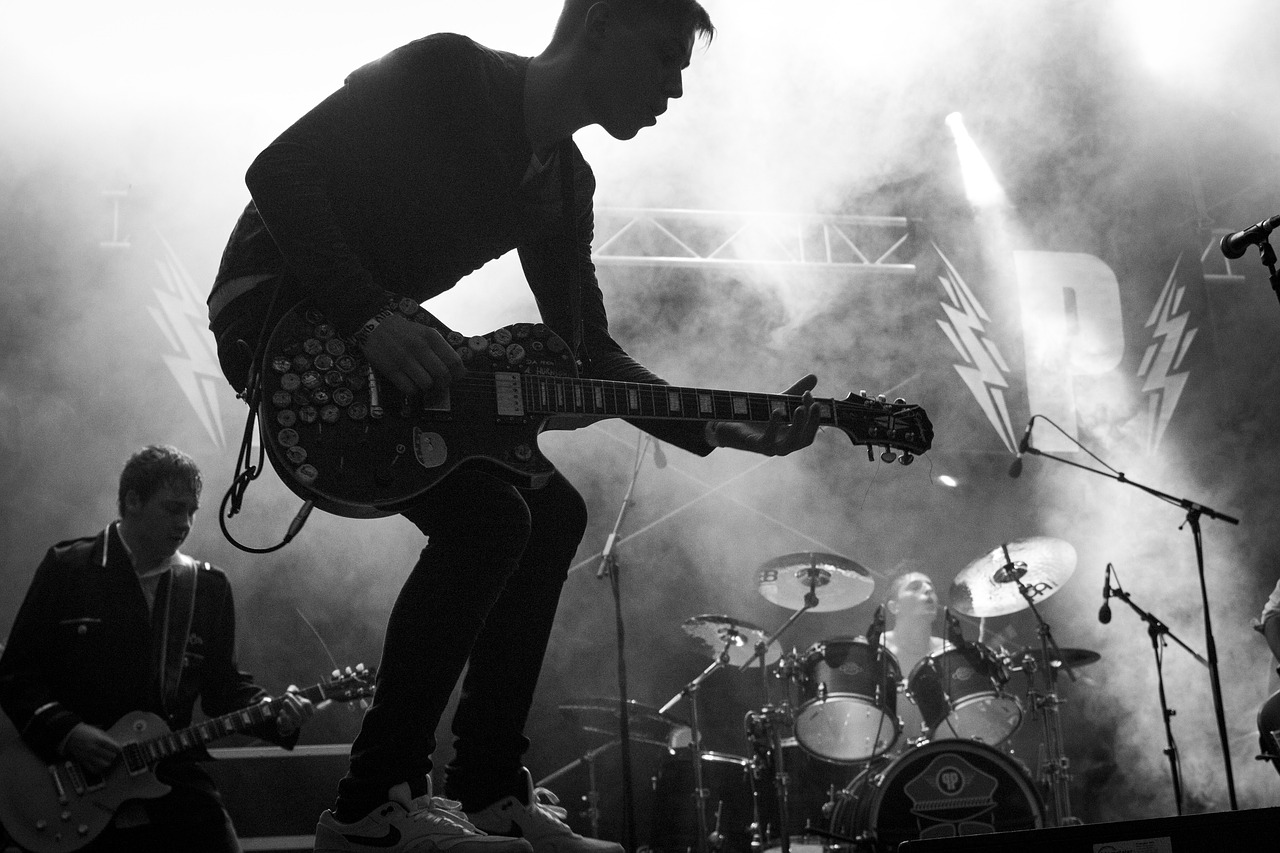Home>Genres>Rock>What Is The Most Common Meter Used In Rock Music?
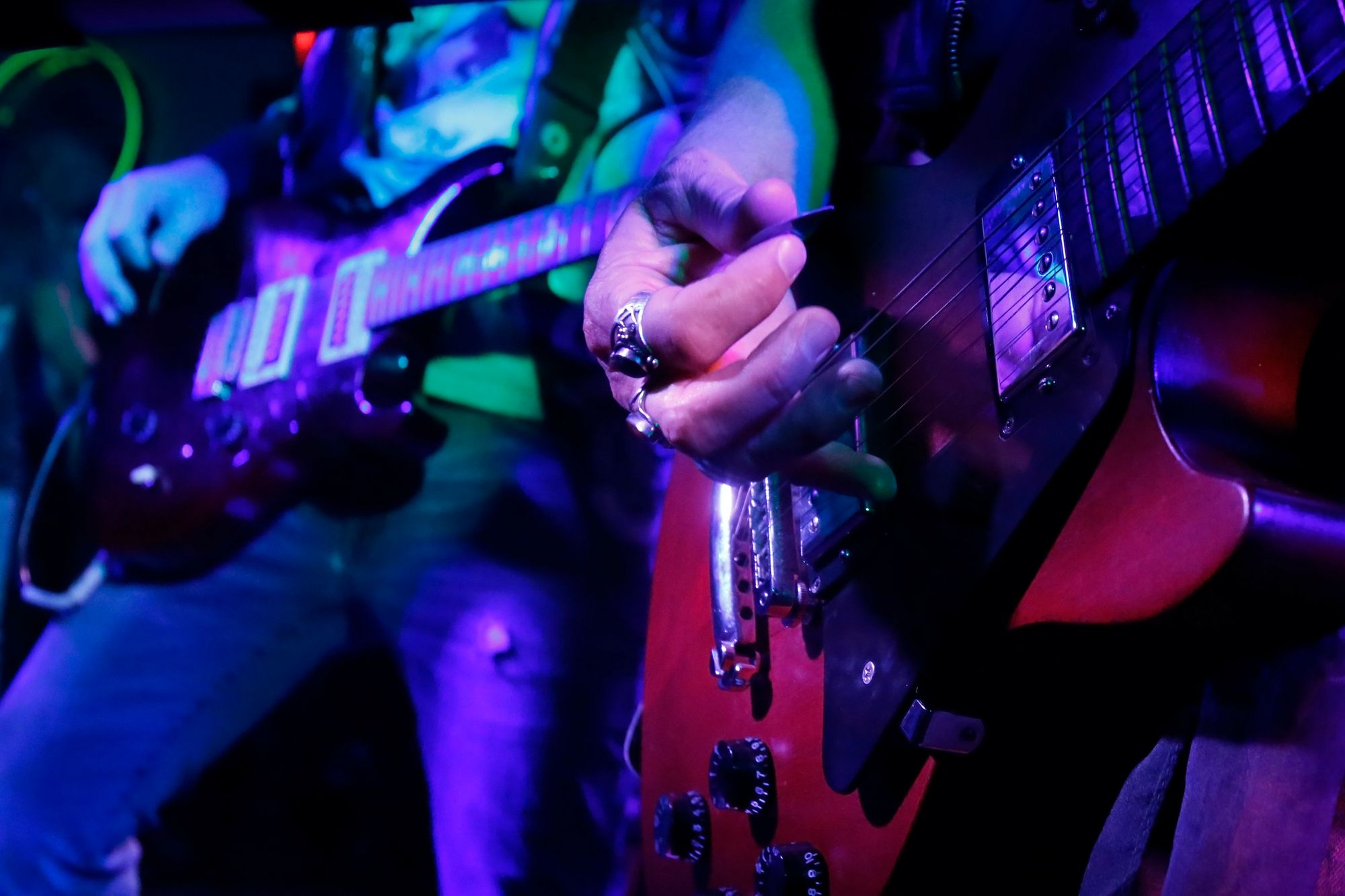

Rock
What Is The Most Common Meter Used In Rock Music?
Modified: February 15, 2024
Discover the most common meter used in rock music and enhance your understanding of this dynamic genre. Explore the rhythmic intricacies that make rock music so captivating.
(Many of the links in this article redirect to a specific reviewed product. Your purchase of these products through affiliate links helps to generate commission for AudioLover.com, at no extra cost. Learn more)
Table of Contents
Introduction
Rock music is a genre that has captured the hearts of millions around the world. From its mesmerizing guitar solos to its thunderous drum beats, rock music has a unique and powerful energy that sets it apart from other genres. But what exactly makes rock music so captivating? One crucial element is the rhythmic structure of the music, which is dictated by the meter.
In music, meter refers to the arrangement of beats and the division of time. It provides a framework for musicians to create a rhythmic pattern that drives the song forward. Without a solid meter, music can become chaotic and unfocused. In rock music, the meter plays a fundamental role in defining the genre’s characteristic sound and feel.
From the rolling rhythms of classic rock to the driving force of hard rock and metal, understanding the most common meter used in rock music is essential for any fan or musician. In this article, we’ll explore the significance of meter in rock music and delve into the various meters that are commonly found in this genre.
By examining these essential rhythmic elements, we can gain a deeper appreciation for the rhythmic complexity of rock music and understand why it holds such a powerful grip on our emotions.
Definition of Meter in Music
Meter in music refers to the organization and division of musical time into regular patterns of strong and weak beats. It provides a rhythmic structure that guides the performance of a musical composition. Meter is denoted by a time signature, which consists of two numbers written at the beginning of a musical staff.
The top number of the time signature represents the number of beats per measure, while the bottom number denotes the type of note that receives one beat. For example, in 4/4 time, there are four beats per measure, and the quarter note receives one beat. In 3/4 time, there are three beats per measure, and the quarter note still receives one beat.
The meter establishes a sense of pulse and helps musicians keep time, allowing them to synchronize their playing and maintain a consistent tempo throughout a piece of music. It provides a framework around which melodies, harmonies, and rhythms are built. By understanding the meter of a piece, musicians can anticipate the rhythmic patterns and play together effectively.
In addition to the time signature, meter is often characterized by the emphasis placed on certain beats within a measure. These emphasized beats are known as strong beats, while the others are referred to as weak beats. The arrangement of strong and weak beats creates the rhythmic feel and groove of a piece of music.
Overall, meter is a crucial component of music, setting the foundation for rhythm and ensuring a coherent and well-structured performance. In the context of rock music, the particular meter used can greatly impact the energy, drive, and overall feel of a song, shaping its distinct sound and character.
Rock Music
Rock music emerged in the mid-20th century as a genre that blended elements of rhythm and blues, country, and folk music. It is characterized by its strong emphasis on electric guitars, powerful vocals, and a driving rhythm section consisting of bass and drums. Rock music has since evolved into various subgenres, including classic rock, alternative rock, punk rock, and heavy metal, each with its own unique sound and style.
What sets rock music apart from other genres is its raw energy and rebellious spirit. It has the power to captivate listeners with its infectious melodies, intense instrumentation, and thought-provoking lyrics. Rock music has served as a platform for social and cultural commentary, expressing emotions, frustrations, and desires that resonate with a broad audience.
From the iconic guitar riffs of Led Zeppelin to the passionate lyrics of Nirvana, rock music has produced countless influential artists and timeless anthems. It has the ability to evoke strong emotions, whether it’s through headbanging to a heavy metal breakdown or swaying along to a melodic ballad.
Rock music has also had a profound impact on popular culture. It has shaped fashion trends, influenced art and film, and even sparked rebellions against the establishment. Rock music concerts are known for their electric atmosphere, where fans come together to share their love for the music, creating an unforgettable experience.
Whether it’s the arena-filling anthems of Bon Jovi, the introspective ballads of Pink Floyd, or the politically charged punk rock of The Clash, rock music continues to be a powerful force in the music industry. It celebrates individuality, self-expression, and the power of music to connect people from all walks of life.
Now that we have a better understanding of rock music and its significance, let’s dive into the importance of meter in shaping the rhythmic foundation of this genre.
The Importance of Meter in Rock Music
Meter plays a crucial role in rock music, as it provides the rhythmic framework that drives the energy and intensity of the genre. The carefully constructed meter sets the tempo, establishes the groove, and creates a sense of pulse that is essential for the rocking feel of the music.
One of the primary reasons why meter is important in rock music is its ability to create a powerful and infectious rhythm. The driving beats and steady pulse generated by the meter give rock music its unique momentum and energy. Whether it’s a fast-paced guitar riff or a pounding bassline, the meter sets the foundation for the rhythmic interplay between different instruments, forming the backbone of the song.
Furthermore, the meter helps in creating syncopation and accentuating certain beats, which adds depth and complexity to the music. Rock music often incorporates syncopated rhythms, where the emphasis is placed on off-beats or weaker beats within a measure. This syncopation adds a dynamic and unexpected element to the music, injecting a sense of tension and anticipation.
Moreover, meter is vital for the coordination and synchronization of the band members. In a rock band, each musician has a specific role to play, and maintaining a unified rhythm is essential for a cohesive performance. The meter acts as a guide for the musicians, allowing them to lock into a common groove and play together with precision and tightness.
A well-defined meter also enables rock musicians to explore different rhythmic patterns and experiment with variations. It provides a framework within which artists can push the boundaries, create interesting rhythms, and innovate within the context of the genre. This freedom to deviate from the standard beat and explore different rhythmic possibilities is what keeps rock music fresh and exciting.
Overall, the importance of meter in rock music cannot be overstated. It shapes the rhythmic character of the music, drives its energy, facilitates coordination among band members, and allows for creative expression. It is the heartbeat that keeps the music alive and propels the audience to headbang, dance, and connect with the powerful emotions conveyed through the sound of rock.
Common Meters in Rock Music
Rock music encompasses a wide variety of styles and sounds, but there are several common meters that are frequently used in the genre. These meters provide the rhythmic foundation for many iconic rock songs and contribute to the distinctive feel and groove that rock music is known for. Let’s explore some of the most common meters found in rock music:
- 4/4 Time Signature: Also known as “common time,” this is the most prevalent meter in rock music. It consists of four beats per measure, with the quarter note receiving one beat. This meter creates a steady, driving rhythm that forms the backbone of many rock anthems. Songs like “Sweet Child o’ Mine” by Guns N’ Roses and “Back in Black” by AC/DC are prime examples of the 4/4 meter in action.
- 3/4 Time Signature: Although less common in rock music, the 3/4 meter adds a unique touch to certain songs, creating a waltz-like feel. It features three beats per measure, and the quarter note still receives one beat. “House of the Rising Sun” by The Animals and “Behind Blue Eyes” by The Who are examples of rock songs that utilize the 3/4 meter to great effect.
- 2/4 Time Signature: This meter, with two beats per measure and the quarter note receiving one beat, provides a more fast-paced and energetic feel. The 2/4 meter is often associated with punk rock and driving rhythms. Songs like “Blitzkrieg Bop” by The Ramones and “Anarchy in the U.K.” by the Sex Pistols demonstrate the powerful impact of the 2/4 meter in rock music.
- 6/8 Time Signature: The 6/8 meter is commonly used in rock ballads and slower, more melodic rock songs. It consists of six beats per measure, with the eighth note receiving one beat. This meter gives songs a flowing and waltz-like quality. Examples of songs in 6/8 meter include “Dream On” by Aerosmith and “November Rain” by Guns N’ Roses.
These four meters represent the most common rhythmic structures in rock music. However, it’s important to note that rock musicians often experiment with different meters and combine them within a song to create unique and engaging rhythms. This experimentation contributes to the diversity and innovation within the genre.
Now that we’ve explored the common meters in rock music, let’s take a look at some other less frequently used meters that also make an appearance in the genre.
4/4 Time Signature
The 4/4 time signature, also known as “common time,” is the most widely used meter in rock music. It is characterized by four beats per measure, with the quarter note receiving one beat. This meter provides a strong and steady rhythmic foundation, creating a driving and infectious groove that defines many rock songs.
In 4/4 time, each measure is divided into four equal parts, giving the music a sense of regularity and predictability. The consistent beat allows rock musicians to play with precision and synchronize their playing with the other band members. It also enables the listeners to easily tap their feet or nod their heads along to the music, emphasizing the rhythmic nature of rock.
The 4/4 meter is versatile and adaptable, suitable for a wide range of rock styles. It has been the go-to time signature for classic rock, hard rock, alternative rock, and many other subgenres within rock music. The driving guitar riffs, pounding drumbeats, and powerful vocals in songs like “Stairway to Heaven” by Led Zeppelin, “Smoke on the Water” by Deep Purple, and “Livin’ on a Prayer” by Bon Jovi all exemplify the power and impact of the 4/4 time signature.
One of the reasons why the 4/4 meter is so prevalent in rock music is its natural inclination towards creating a sense of momentum and energy. The four beats per measure provide a solid structure for the band to build upon, allowing for powerful and syncopated rhythms that drive the music forward. It supports the heavy guitar riffs and accentuates the pounding rhythms of the drums, creating a dynamic and electrifying experience for the listeners.
The 4/4 meter also allows for rhythmic diversions and accents on specific beats within the measure. Rock musicians often incorporate syncopated rhythms, where the emphasis is on off-beats or weaker beats. This syncopation creates tension and adds a level of complexity to the music, making it more interesting and engaging. It is this interplay between the strong and weak beats within the 4/4 meter that adds depth and groove to rock music.
Overall, the 4/4 time signature is the foundation of rock music, providing the driving rhythm and sense of pulse that makes the genre so captivating. It gives musicians the freedom to explore different rhythmic patterns and create powerful compositions that resonate with audiences worldwide. Whether it’s headbanging to an electrifying guitar solo or singing along to an anthemic chorus, the 4/4 meter in rock music is the heartbeat that keeps the genre alive and thriving.
3/4 Time Signature
While less commonly used in rock music, the 3/4 time signature adds a unique and captivating element to certain songs in the genre. In 3/4 time, there are three beats per measure, with the quarter note receiving one beat. This meter is often associated with waltz-like rhythms and creates a distinctively different feel compared to the more common 4/4 time signature in rock music.
The 3/4 time signature provides a graceful and flowing rhythm, giving songs a sense of elegance and nostalgia. It is well-suited for ballads and slower, melodic rock tunes that aim to evoke emotion and facilitate introspection. By incorporating the 3/4 meter, rock musicians can create a unique atmosphere and explore a different side of the genre.
Rock songs that utilize the 3/4 time signature often showcase a sense of vulnerability and tenderness. The slower pace and emphasis on each beat allow for more expressive and heartfelt performances. Songs such as “House of the Rising Sun” by The Animals and “Behind Blue Eyes” by The Who exemplify the evocative power of the 3/4 meter in rock music.
By contrasting with the more predictable and straightforward rhythms of 4/4 time, the 3/4 meter adds variety and enhances the overall musical experience. It introduces a sense of unpredictability and departure from the traditional rock sound, captivating listeners’ attention and providing a unique sonic landscape.
The 3/4 time signature also allows for creative exploration within the context of rock music. Musicians can experiment with different rhythmic patterns and syncopation, adding complexity and depth to their compositions. This meter offers an opportunity to intertwine rock elements, such as powerful guitar solos or driving bass lines, with the graceful nature of waltz-inspired rhythms.
Though less common in the rock music repertoire, the 3/4 time signature adds a touch of elegance and emotional depth that can be a welcome departure from the energy and intensity of other meters used in the genre. It allows musicians to showcase their versatility and expand the sonic palette of rock music, connecting with listeners on a different level.
While rock music is predominantly associated with the driving force of the 4/4 time signature, the inclusion of the 3/4 meter demonstrates the genre’s ability to embrace diverse musical influences and experiment with different rhythmic structures, showcasing the versatility and boundary-pushing nature of rock music.
2/4 Time Signature
The 2/4 time signature is not as commonly used in rock music as the more prevalent 4/4 meter, but it still plays a significant role in certain subgenres and specific songs. In the 2/4 time signature, there are two beats per measure, with the quarter note receiving one beat. This meter creates a fast-paced and energetic feel, adding a punchy and driving rhythm to rock music.
The use of the 2/4 time signature in rock music often aligns with the aggressive and rebellious nature of punk rock, where short, fast, and intense songs dominate. The simple, straightforward meter of 2/4 provides a solid foundation for driving guitar riffs, pounding drums, and rapid-fire lyrics that characterize punk rock’s raw and unfiltered sound.
Songs like “Blitzkrieg Bop” by The Ramones and “Anarchy in the U.K.” by the Sex Pistols are prime examples of how the 2/4 time signature drives the energy and intensity of punk rock music. The relentless and rapid rhythm creates a sense of urgency and aggression, captivating listeners with its raw power.
While typically associated with punk rock, the 2/4 time signature is not limited to this subgenre alone. Rock songs influenced by other styles, such as rockabilly and early rock ‘n’ roll, often feature this meter. Songs like “Johnny B. Goode” by Chuck Berry and “Blue Suede Shoes” by Elvis Presley showcase the infectious and upbeat rhythm created by the 2/4 time signature, contributing to their timeless appeal.
The 2/4 meter’s simplicity and repetitive nature make it easy for listeners to engage with and follow along. Its driving rhythm inspires movement and can set the stage for energetic live performances and crowd participation. The consistent and pulsating nature of the 2/4 time signature encourages foot stomping, headbanging, and dancing, amplifying the overall impact of the music.
Despite its relative infrequency in rock music compared to the more common meters, the 2/4 time signature offers a refreshing change of pace and injects a burst of energy into the genre. It demonstrates the versatility of rock music, showcasing how different meters can be employed to create distinct atmospheres and cater to a variety of musical styles within the broader rock spectrum.
Whether driving the rebellious spirit of punk rock or infusing a dose of infectious rhythm into rockabilly, the 2/4 time signature brings a captivating and lively element to rock music, keeping listeners on their feet and fully immersed in the electrifying experience.
6/8 Time Signature
The 6/8 time signature, also known as compound duple meter, adds a distinctive and captivating feel to rock music. In 6/8 time, there are six beats per measure, with the eighth note receiving one beat. This meter provides a flowing and waltz-like rhythm, adding a sense of elegance and rhythmical complexity to the music.
The 6/8 time signature is commonly found in rock ballads and slower, melodic rock songs. It enhances the emotive and introspective nature of these songs, allowing for a more expressive and nuanced performance. The meter’s composition of beats in groups of three creates a sense of forward motion and graceful movement, contributing to the overall beauty and poise of the music.
Rock songs in 6/8 time often showcase a distinct sense of phrasing and natural groove. The six beats per measure allow musicians to explore different rhythmic patterns and emphasize specific beats within the measure, creating syncopation and a captivating rhythmic interplay. Songs like “Dream On” by Aerosmith and “November Rain” by Guns N’ Roses exemplify the power and impact of the 6/8 time signature in conveying powerful emotions and evoking a sense of grandeur.
The 6/8 meter also adds depth and complexity to rock music by allowing for subtle variations and rhythmic accents. Musicians can experiment with syncopated rhythms, emphasizing off-beats or weaker beats within a measure. The contrast between the strong and weak beats within the 6/8 time signature gives rock songs a distinctive groove and adds layers of intrigue and musicality.
Furthermore, the flowing and waltz-like feel of the 6/8 meter allows for graceful instrumental solos and interweaving melodies. Guitarists can explore melodic lines that dance over the rhythmic foundation, while other instruments, such as keyboards or strings, can contribute to the melodic tapestry. This creates a sense of musical conversation and adds a dynamic element to the overall composition.
While the 4/4 time signature remains the dominant meter in rock music, the 6/8 time signature offers a refreshing departure and a glimpse into the genre’s versatility. It showcases rock music’s ability to embrace different rhythmic structures and adapt to various moods and styles. By incorporating the 6/8 meter, rock musicians can infuse their songs with elegance, emotion, and a captivating sense of musicality.
The 6/8 time signature adds depth and sophistication to rock music, creating a rhythmic foundation that resonates with listeners on both an emotional and visceral level. It demonstrates the genre’s ability to transcend boundaries and explore diverse rhythmic landscapes, enhancing the overall experience and showcasing the artistry of rock musicians.
Other Meters in Rock Music
While the 4/4, 3/4, 2/4, and 6/8 time signatures are the most commonly used meters in rock music, there are other meters that make occasional appearances and add a unique flavor to the genre. These meters provide opportunities for experimentation and create interesting rhythmic structures within rock songs. Let’s explore some of these less frequently used meters:
- 5/4 Time Signature: The 5/4 meter consists of five beats per measure, with the quarter note receiving one beat. This irregular meter challenges the listener’s expectations and creates a sense of asymmetry and tension. Songs like “Take Five” by The Dave Brubeck Quartet and “Money” by Pink Floyd feature the 5/4 time signature, demonstrating its ability to create a distinct rhythmic feel in rock music.
- 7/8 Time Signature: The 7/8 meter, with seven beats per measure and the eighth note receiving one beat, offers a complex and intricate rhythmic structure. It creates a sense of unease and unpredictability, adding excitement and tension to the music. Progressive rock bands often incorporate the 7/8 time signature into their compositions to create memorable and technically challenging passages.
- 9/8 Time Signature: The 9/8 meter, consisting of nine beats per measure and the eighth note receiving one beat, further expands the rhythmic possibilities in rock music. It creates a compound meter that combines triple and duple divisions, resulting in a unique and layered groove. Songs like “Misty Mountain Hop” by Led Zeppelin feature sections in 9/8, showcasing the rhythmic complexity and versatility of this meter in rock music.
These less commonly used meters add diversity and interest to rock music, allowing musicians to push boundaries and incorporate complex rhythmic patterns into their compositions. They provide an avenue for musical experimentation and create unique rhythmic textures that captivate the listener’s attention.
While the 4/4 time signature remains the foundation of rock music, the inclusion of these other meters showcases the genre’s openness to exploring various rhythmic concepts and pushing the boundaries of traditional structures. It highlights the creative potential within rock music, giving artists the freedom to experiment and create music that is both innovative and captivating.
By incorporating these less frequently used meters, rock musicians can create compositions that surprise and engage listeners, adding depth and complexity to their sound. These meters allow for the exploration of unconventional rhythms and serve as a testament to the genre’s ever-evolving nature.
As rock music continues to evolve, we may see even more experimentation with different meters, expanding the rhythmic possibilities within the genre. The variability and flexibility of rock music ensure that it will continue to incorporate new rhythmic ideas, captivating audiences and pushing the boundaries of what rock music can achieve.
Conclusion
Meter is a fundamental aspect of music, and in the realm of rock music, it plays a vital role in shaping the rhythmic foundation of the genre. Whether it’s the driving force of the 4/4 time signature, the waltz-like elegance of the 3/4 meter, the fast-paced intensity of the 2/4 meter, or the flowing grace of the 6/8 time signature, each meter brings a distinct flavor and character to rock music.
The importance of meter in rock music cannot be overstated. It provides the framework for rhythm, sets the tempo, and creates a sense of pulse. The meter drives the energy and intensity of rock music, allowing musicians to synchronize their playing and create a cohesive sound. It also plays a crucial role in engaging the listener, eliciting foot-tapping, headbanging, and a deep sense of connection to the music.
While the 4/4 time signature remains the most common and versatile meter in rock music, the inclusion of other meters such as 3/4, 2/4, and 6/8 adds variety and excitement. These different meters allow rock musicians to explore new rhythmic territories, create diverse sonic landscapes, and captivate audiences with unexpected and captivating rhythms.
From the rebellious spirit of punk rock to the introspective ballads of classic rock, the meter provides the rhythmic foundation that amplifies the impact and power of rock music. It allows for experimentation, innovation, and the creation of captivating compositions that continue to shape the genre.
As rock music evolves, it will undoubtedly continue to embrace and explore various meters and rhythmic structures. This ongoing experimentation will ensure that rock music remains dynamic, fresh, and engaging to audiences around the world.
In conclusion, meter is the heartbeat of rock music, pulsating with energy, driving the rhythm, and captivating the listener. Whether it’s the familiar 4/4 beat or the less common meters that add a unique touch, the rhythmic structures in rock music form the backbone of the genre, delivering the powerful and infectious sound that has resonated with millions of fans throughout history.

